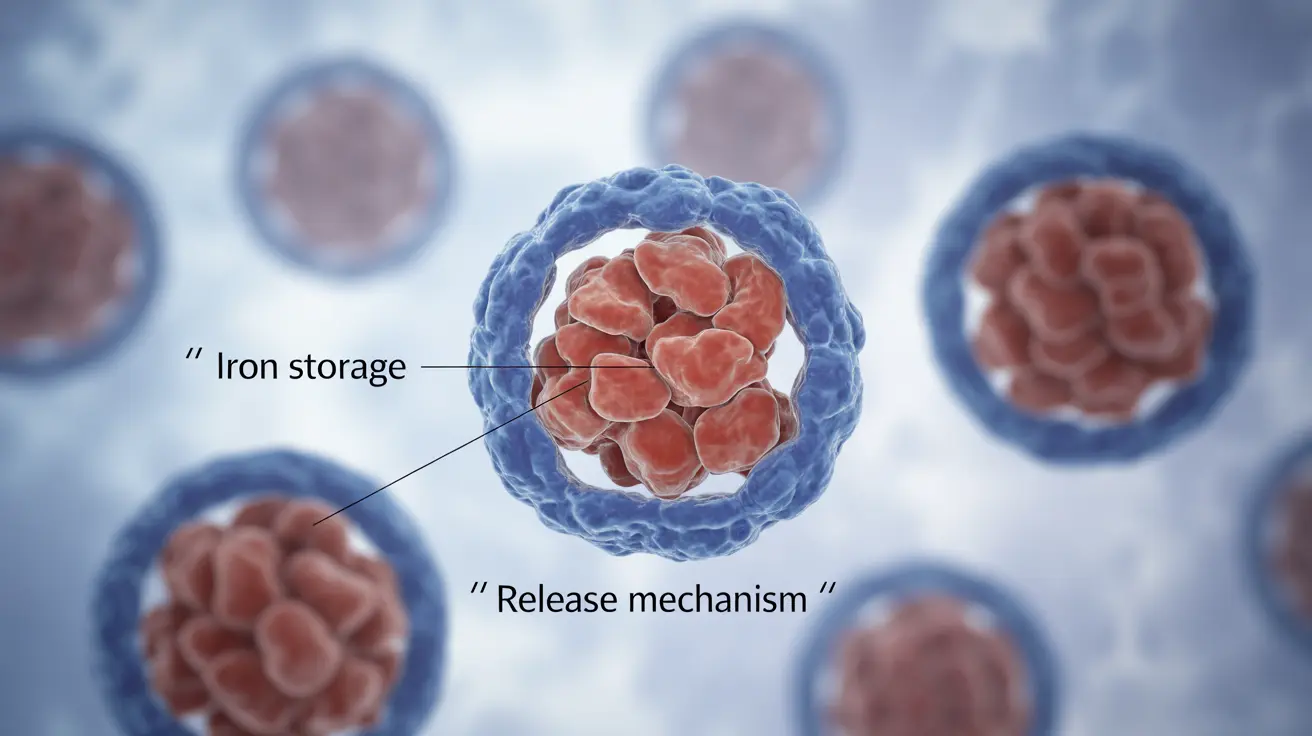Ferritin plays a crucial role in your body's iron management system, acting as the primary storage protein for iron. Understanding your ferritin levels is essential for diagnosing and monitoring various health conditions, from iron deficiency to iron overload disorders.
This comprehensive guide will explore what ferritin is, why it matters, and how testing and monitoring can help maintain optimal health.
What Is Ferritin and Why Is It Important?
Ferritin is a protein complex that stores iron in your cells and releases it when your body needs it. Think of it as your body's iron bank account – it keeps iron safely stored until it's needed for essential functions like producing red blood cells, supporting enzyme reactions, and maintaining overall cellular health.
Normal Ferritin Levels and Testing
A ferritin blood test measures the amount of stored iron in your body. Normal ranges typically vary by age and gender:
- Adult men: 20-250 nanograms per milliliter (ng/mL)
- Adult women: 10-120 ng/mL
- Children: 7-140 ng/mL
These ranges may vary slightly depending on the laboratory and testing method used.
Signs and Symptoms of Low Ferritin
When ferritin levels drop below normal ranges, you might experience various symptoms, including:
- Persistent fatigue and weakness
- Shortness of breath
- Dizziness
- Pale skin
- Brittle nails
- Hair loss
- Cold hands and feet
Understanding High Ferritin Levels
Elevated ferritin levels can indicate several conditions:
- Hemochromatosis (iron overload disorder)
- Inflammation or infection
- Liver disease
- Certain types of cancer
- Rheumatoid arthritis
Regular monitoring is essential if you're diagnosed with any condition affecting ferritin levels.
Treatment and Management
Managing Low Ferritin
Treatment for low ferritin typically involves:
- Iron supplementation
- Dietary changes to include iron-rich foods
- Regular monitoring of levels
- Addressing underlying causes
Managing High Ferritin
Treatment approaches for high ferritin may include:
- Therapeutic phlebotomy (blood removal)
- Dietary modifications
- Treatment of underlying conditions
- Regular medical supervision
Frequently Asked Questions
What are the common symptoms of low ferritin levels and how do they affect my health?
Low ferritin levels primarily cause fatigue, weakness, and shortness of breath. They can also lead to pale skin, brittle nails, and hair loss. These symptoms occur because your body doesn't have enough stored iron to produce adequate hemoglobin for oxygen transport.
How is a ferritin blood test performed and how should I prepare for it?
A ferritin blood test is a simple blood draw from your arm. No special preparation is typically required, though your doctor may ask you to fast for 12 hours before the test. It's best to inform your healthcare provider about any medications or supplements you're taking.
What does it mean if my ferritin levels are higher than normal and what conditions can cause this?
Higher than normal ferritin levels can indicate conditions such as hemochromatosis, inflammation, liver disease, or certain types of cancer. Some infections and inflammatory conditions can also cause temporarily elevated ferritin levels.
How does ferritin differ from iron, and why is measuring ferritin important for diagnosing iron-related disorders?
While iron is the essential mineral itself, ferritin is the protein that stores iron in your cells. Measuring ferritin provides a more accurate picture of your body's iron stores than measuring iron levels alone, making it valuable for diagnosing both iron deficiency and iron overload conditions.
Can ferritin levels be used to monitor treatment for anemia or iron overload conditions?
Yes, ferritin levels are an excellent way to monitor treatment effectiveness for both iron deficiency anemia and iron overload conditions. Regular testing helps healthcare providers adjust treatment plans and ensure optimal iron balance.




